https://www.modernghana.com/news/976638/zahi-hawass-is-back-when-will-nefertiti-return.html
Zahi Hawass Is Back: When Will Nefertiti Return Home To Egypt?
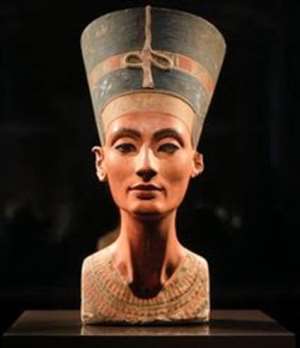 Bust of Nefertiti in Neues Museum, Berlin, Germany.
Bust of Nefertiti in Neues Museum, Berlin, Germany.It has been reported that Zahi Hawass, the famous Egyptian Egyptologist has announced his intention, with support of private individuals, to resume the struggle to recover looted major Egyptian artefacts or artefacts acquired under dubious, contested circumstances that are in Western museums.
For the benefit of those who seem to think that the struggle to recover African artefacts in Western museums started only with the historical declaration by French President Emmanuel Macron at Ouagadougou on 28 November, 2017 or with the publication of the ground-breaking Sarr-Savoy report on 23 November 2018, we must mention that Zahi Hawass and others had started the quest long time ago. The list of Hawass includes nothing less than the bust of Nefertiti, now in Neues Museum, Berlin ,Germany, the Rosetta Stone in British Museum, London, United Kingdom, and the Dendera zodiac in Louvre Museum, Paris, France. Also, on the list of the Egyptian archaeologist are, the statue of Great Pyramid architect Hemiun in Hildesheim's Pelizaeus Museum, the bust of Prince Ankhhaf in Boston's Museum of Fine Arts, and the statue of King Ramses II in the Egyptian Museum, Turin, Italy.
Hawass is thus challenging three colonialist and imperialist powers that have been largely responsible for most of the looting of artefacts in the colonies. Dr. Hawass was able first as the Head of the Antiquities Department in Cairo and later, as Minister of State for Antiquities Affairs under President Hosni Mubarak, to secure the restitution of a considerable number of artefacts to Egypt.
At the time of the discovery of Nefertiti by workers under a team headed by the German archaeologist, Ludwig Borchardt, on 6 December 1912, Egypt was still under Turkish rule. In accordance with rules prevailing in those days, a committee consisting mainly of Europeans decided which part of the fund would go to the country that financed the excavation and which part would remain in Egypt which was represented by the French who also presided over the committee. Borchardt was also a member of the committee. Apparently, he did not completely show the fund of the bust to the committee and had covered it partly with a layer of grime and so was allowed to take it to Germany in August 1913. But as soon as the French and the Egyptians realized what had happened, when the image was published in a book in 1923, they started demanding for its return. The Germans had kept the bust secret for ten years.
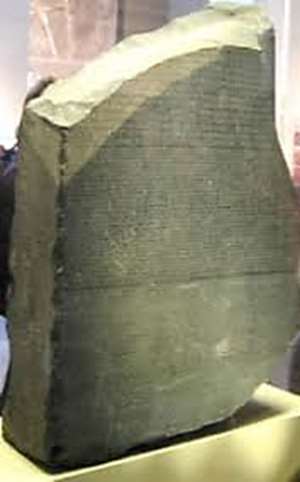 Rosetta stone, Egypt, now in in British Museum, London, United Kingdom.
Rosetta stone, Egypt, now in in British Museum, London, United Kingdom. The Rosetta Stone was discovered in 1799 near Rosetta, Egypt by a French army engineer in Napoleon's army sent to conquer Egypt but after the defeat of France by Britain, the stone was handed over to the British under the Capitulation Treaty of Alexandria, 2 September 1801 signed by representatives of the British, French and Ottoman forces. The Rosetta Stone has been in the British Museum since 1802 and in July 2003 Zahi Hawass, then Secretary-General of Egypt's Supreme Council of Antiquities, requested its return to Egypt.
The Dendera Zodiac was said to have been discovered by a French archaeologist Vivant Denon in 1799 during Napoleon's invasion of Egypt and taken in 1822 to Paris and is now in the Louvre. This zodiac was sawn and removed from the ceiling of the church where it was. By using saws, jacks, scissors and gunpower for explosion. Those who are now busy preaching the need to keep looted or dubiously acquired artefacts together did not seem to be so cautious when it concerned the Dendera zodiac and the Parthenon Marbles.
As readers can well imagine, it was not plain sailing for Hawass whom many feared and also hated because of the power he wielded in Egypt to determine who would be allowed to carry archaeological work and sometimes ordered that some foreign scholars not be allowed to enter Egypt.
Before Hawass became head of the Antiquities Office in Cairo, many Westerners treated Egypt as some sort of archaeological supermarket where they could go and collect whatever Egyptian artefact they wanted. All that ceased with presence of a well-qualified Egyptian archaeologist as head of the office controlling antiquities in Egypt. Many Westerners could not simply accept that there was an Egyptian who could tell them what they could or could not do in a country Europeans regarded as their turf, a belief going back to Hegel who considered that the northern part of Africa did not belong to Africa and should be detached and attached to Europe.
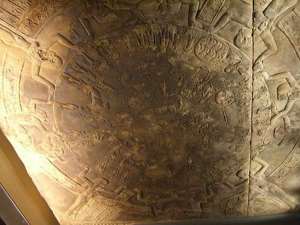 Dendera zodiac ceiling painting, Egypt ,now in Louvre Museum ,Paris, France.
Dendera zodiac ceiling painting, Egypt ,now in Louvre Museum ,Paris, France. The energetic and charismatic Egyptian archaeologist has made quite a number of oponents or even enemies through his several writings and pronouncements. We are here concerned only with his advocacy for restitution. It seems to us that the dynamic Hawass has done more than any other person to bring restitution to the fore of international attention and his departure from the scene in 2011 left a vacuum which was never filled.
Hawass is now returning to an international scene that is ,generally, more favourable to restitution than it was in 2011 and earlier when one faced opponents such as Neil McGregor, Philippe de Montebello and James Cuno, high priests of the so-called 'universal museums' who declared flatly that the looted artefacts in their museums have become part of the cultures of the countries in which they were located and thus barred the way to any general restitution and particularly formed a bullwark against restitution of the Parthenon Marbles, Nefertiti and Benin artefacts. We have had the Ouagadougou Declaration from French President Macron that African artefacts should be returned to Africa within the next five years from the date of his speech on 28 November 2017.The commission the French president set up issued ton 23 November 2018 a ground-breaking report entitled, Restitution of African Cultural Heritage. Toward a New Relational Ethics. The Sarr-Savoy report recommended massive restitutions to Africa. Thus arguments that used to be opposed to demands by Zahi Hawass for restitution of artefacts acquired under dubious circumstances from Egypt, can no longer be advanced with the same confidence as before. It would be interesting to see whether those who suggested that the Sarr-Savoy report should have been extended to cover Oceania and North Africa would now argue that the conclusions of that report should be confined to former French colonies in Africa.
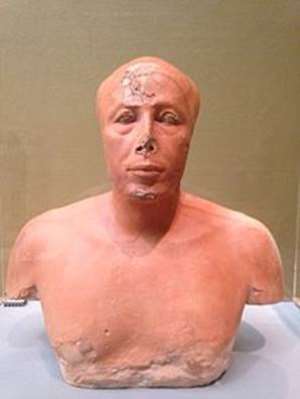 Bust of Prince Ankhhaf , at the Museum of Fine Arts, Boston , U.S.A. Wikipedia.
Bust of Prince Ankhhaf , at the Museum of Fine Arts, Boston , U.S.A. Wikipedia. Zahi Hawass is coming back to an international scene where some are asking for a new international instrument on restitution. Some speak of a need for a new convention on cultural property and specifically on restitution. Others speak of principles of restitution similar to the Washington Conference Principles on Nazi-Confiscated Art (Washington Principles) 1998 for the compensation of holocaust victims of Nazi confiscations and looting. We note that usually those who do not want to fulfil their obligations often ask for new laws as if existing laws prevented them from doing what is right. Existing laws can be changed if there is a will for change.
We recall that in 2010 Zahi Hawass organized the International Cairo Conference on Restitution. He would no doubt notice hat many of the objectives of that conference have not been achieved mainly due to the lethargy of some of the participants.
The international scene has also changed in a decisive manner. Whereas previously restitution was considered by many as thedomain of activists,without any help from established institutions, now some foundations, with considerable funds, seem ready to throw their weight behind the demands of the activists Whether this is a good omen for the cause of restitution or not will be seen in a few years time. China has goiven her full support to restitution having herself bveen victim of the notorious Anglo-Frech attack on the Summer Palace in Beijin in 1860. This attack was roundly condemned by Victor Hugo
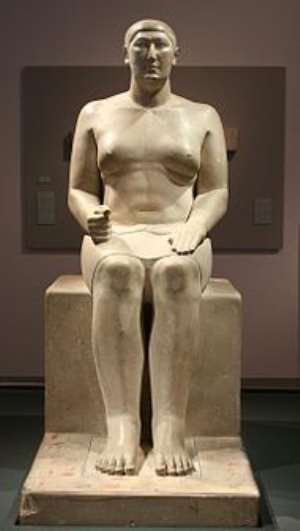 Statue of Hemiunu at the Pelizaeus Museum , Hildesheim , Germany , his feet rest on columns of hieroglyphs painted in yellow, red, brown, Wikipedia.
Statue of Hemiunu at the Pelizaeus Museum , Hildesheim , Germany , his feet rest on columns of hieroglyphs painted in yellow, red, brown, Wikipedia. Hawass will also realize that as far as concerns defences for the holding of looted or dubiously acquired artefacts by Western museums, nothing has really changed. The same old and baseless contention that many deprived States and their museums cannot fully protect the looted artefacts as well as the Western museum. This argument has been proved over and over again as a ploy for the colonialist States and museums to hang on to the artefacts of other peoples. A State such as Egypt does not have any problem in housing precious artefacts such as Nefertiti and Rosetta stone but those detaining them at the moment have not shown any inclination to restitute them. They call themselves 'universal museums' and feel thereby justified to hold any artefacts they consider to be important, since they allege to be acting on behalf of humanity. The occasion of the opening in 2020 of the Grand Egyptian Museum provides a great opportunity for Western museums to make a gesture to Egypt by returning some of the iconic Egyptian artefacts. But western museums have never been known to overcome their greed and selfishness in matters of artefacts. They never seem to have enough. The British Museum with some 13 million objects is not ready to return any artefacts,including the Parthenon Marbles.
Dr Hawass may find that there is a new line of defence which was not there a decade ago but is now very popular with Western scholars and their museums: provenance research. This line of defence states that before the European museums can return any looted artefact, they will have to study its provenance. Provenance is now more that the history of the various ownerships of the object and is extended to include practically every piece of information about the objects the museums have been holding for more than hundred years. Even when the origin of the objects are not in doubt and it is known that they were looted from Egypt, Benin or Ethiopia, some insist they must now study their provenances and we are told that provenance research takes time and money, two factors that are always in shortage. Many museums have only one or two curators charged with provenance research and with thousands of artefacts in the museums,it is not difficult to guess how long it will take to do provenance research on looted artefacts in Western museums.
Those calling for more provenance research must reflect that at the moment this research appears as a delaying tactic on the part of many. Even persons sympathetic to African restitution might not realize that an emphasis on provenance research automatically implies extended detention of these artefacts in the West until scholars have finished their research. But for, and by, whom were these artefacts made? Should the interests of Africans be subjected to the needs of scholars? Similarly, the so-called Hiedelberg Declaration of German ethnologists also presupposes further detention of the objects in Germany.
(Statement approved on the occasion of the 2019 Annual Conference of the Directors of Ethnographic Museums in German Speaking Countries, in Heidelberg, 6 May 2019- Decolonising requires dialogue, expertise and support – The Heidelberg Statement)
Nefertiti, Rosetta Stone, Benin bronzes, Parthenon Marbles and other well-know objects held against the will of their owners clearly do not require any further provenance research. So why are they not being restituted? The determination of Western States to dominate others and the economic benefits accruing from holding these objects cannot be discarded.
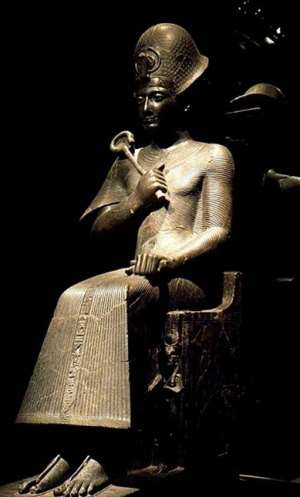 Ramesses II in the Egyptian Museum of Turin, Italy. Wikipedia.
Ramesses II in the Egyptian Museum of Turin, Italy. Wikipedia. Another popular defence of Western holding of looted objects or objects acquired under dubious circumstances, has been the so-called 'shared heritage' or 'shared legacy' advanced by institutions such as the Prussian Cultural Heritage Foundation. Briefly, it is argued that the present holders of African artefacts and Africans have a shared legacy or tradition so that there is no question of the looted artefacts being returned to their original owners. The notion of shared heritage is indeed a bold attempt flying in the face of historical reality and intended to disarm attempts to recover looted artefacts. A heritage between slave and master, oppressed and opressors, colonizers and colonized? The notion contradicts our experience of slavery,colonialism and neo-colonialism. Surely German colonizers experienced their colonialism with its confiscation of property, forced labour, segregation, violence and discriminatory laws differently from their African victims many of whom finally died only to have their human remains sent to Berlin so that scholars such as Felix Luschan could study them in order to support their racists theories on European superiority.
The inabilty or unwillingness of many to see the brutality and violence in slavery and colonialism obviously prevent them from understanding why African human remains and looted artefacts must be returned to their countries of origin. Offers of co-operation, loans and training cannot replace the need to restitute looted objects. We wonder whether anybody will seriously suggest that the victims of Nazi terror and injustice have a shared legacy with their oppressors. Can objects wrenched with such violence ever became shared heritage of oppressor and victim?
Taking into account all the artefacts Western States and their museums have taken from Egypt, it is really shameful that they should be disputing with Egypt about any Egyptian artefact. The Egyptian Museum in Berlin alone has thousands of Egyptian artefacts. In Germany as a whole, there must be at least 200,000 Egyptian artefacts. How many Egyptian artefacts does Germany which is not part of Egyptian culture need ? Can Germany not afford to return this one Egyptian artefact to Cairo as James Simon, who originally financed the Asmara excavations suggested and many German officials agreed until Adolf Hitler said 'Nein'? Will Hitler's 'Nein' be forever the German position?
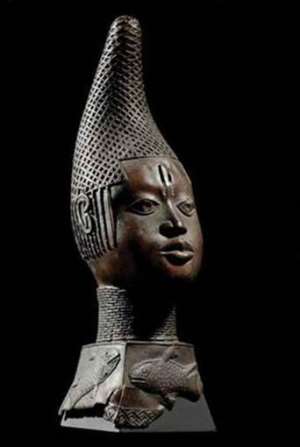 Queen-mother Idia, Benin, Nigeria, now in Humboldt Forum, Berlin, Germany.
Queen-mother Idia, Benin, Nigeria, now in Humboldt Forum, Berlin, Germany. Dr.Zahi Hawass will have noticed that more and more persons are now asking questions about the sources of the artefacts in Western museums. There are tours that explicitly set out to tell the imperialist and colonial violence behind many artefacts in leading museums. They reveal the backgrounds of dubious acquisitions and demand their return to their countries of origin. Some mass movements set out explicitly to decolonize museums and ask that artefacts be returned to owners in Africa. Museums, such as British Museum, have been occupied by prtestors seeking termination of sponsorship by corporations with dubious activities,such as producing ammunition used in wars in Africa and elsewhere or producing drugs with devastating effects on individuals. Even trustees of museums,such as the British Museum, have started questioning the legitimacy of their participating in the work of a museum that accepts funds from corporations with questionable activities and ome trustees have resigned on this ground. The African Diaspora and European and American youths have become active and vociferous in their demands for clean sweep of questionable museum relations.
Humboldt Forum that will be opened in November 2020 will unwittingly bring into sharp focus the presence of artefacts with dubious acquisition in the Museum Island in Berlin. Nefertiti in Neues Museum will be closer to the other African queen, Queen-Mother Idia, also in detention in Humboldt Forum, just across a large park opposite the Neues Museum. The presence of the two African queens, iconic figures from Egypt and Nigeria, will recall constantly the demands of Egypt and Nigeria for restitution of their artefacts held in Berlin,where the scramble for African territories was officially estsablished by European States in 1885 with the disastrous colonial systems that prevailed on our Continent and left us magnifold problems that defy efforts at resolution.
The movement for restitution which is unstoppable in our days could still do with all available support, including that of the veterans of the ever-growing movement for repatriation and justice.
Kwame Opoku.

The author has 255 publications published on Modern Ghana. Column Page: KwameOpoku
-- Sent from my Linux system.
No comments:
Post a Comment